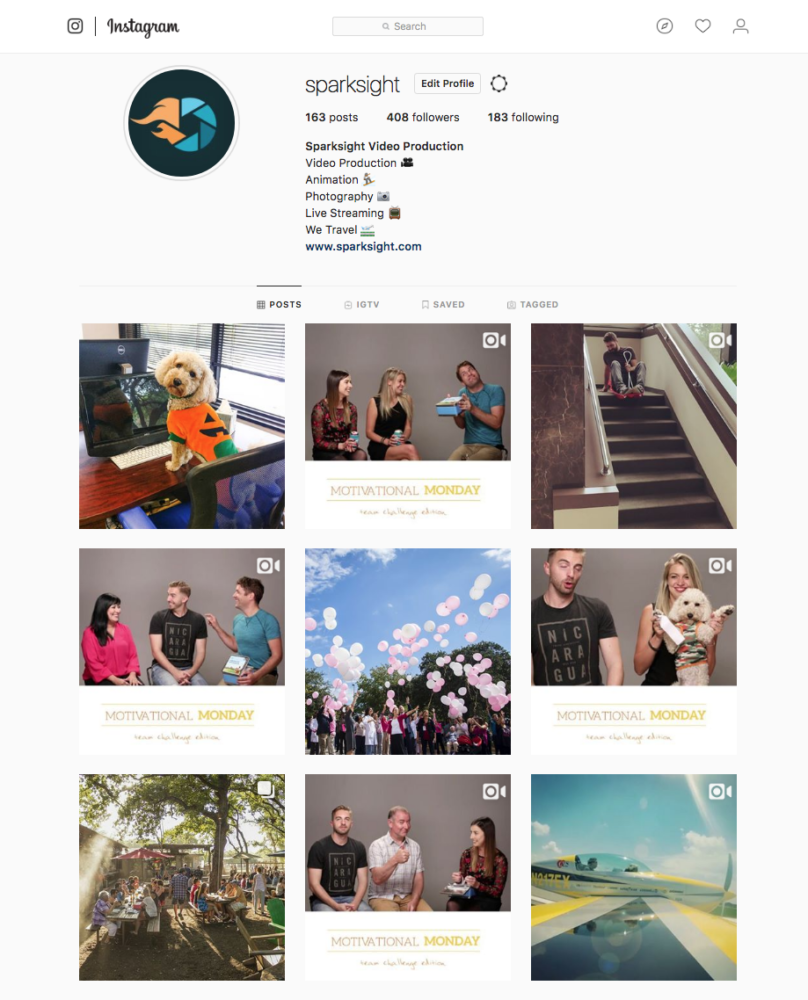Instagram Strategy for B2B Marketers
Instagram has become an extremely popular marketing tool for B2C businesses, enabling them to connect with their audience in a fun and visual way. But for B2B marketing, leveraging Instagram doesn’t always seem like the natural choice. Many B2B companies are in industries that are considered more “professional” such as tech support and software, or legal and financial services. These services and products are extremely useful and important, but they aren’t usually considered “fun” and can be more challenging to translate into a visual platform like Instagram. For B2B marketers, focusing exclusively on a product or service in Instagram marketing will only go so far. Instagram is at its most effective when leveraged to tell stories and connect with current and potential customers. These three tips will help with B2B marketing especially when creating an Instagram strategy.
Focus on the Customer
For B2B companies, creating and sharing compelling visuals of a product or service can limit your options. Instead of a singular focus on what your company sells, think about your target customer. Who are they and what problem do they have that your product or service can solve? To begin developing a successful Instagram strategy, you need to know your audience. Create at least one customer persona and decide how you would engage with them. By understanding your ideal persona, you can create more effective content to drive engagement. Look at existing “big-picture” data to get demographic information on your audience and refine it to create a single customer. Use this customer as your touchstone when you begin to develop your Instagram content strategy. Once you create your ideal customer persona and familiarize yourself with who they are and what their pain points are, you can craft content that will reach them effectively.
https://www.facebook.com/Sparksight/videos/548878572212073/
Tell a Story
As a B2B company, the ultimate goal is for customers to purchase your service but treating Instagram posts like traditional ads are unlikely to drive the kind of engagement that results in conversions. Telling a compelling story is the key to creating a good marketing campaign, and that is especially true for B2B companies. Stories resonate with people and people are the ones ultimately making the decision to purchase or adopt a service or product. Now that you have a customer persona and know what defines your target audience, you can figure out what story will be most appealing to them. B2C companies use a lot of ads that pack an emotional punch, which may not be as appropriate for B2B marketing posts. Focus on telling a customer story and showing how your product helped them solve a problem or improve their situation. Instagram provides ample opportunity to do this beyond just photos–post short videos or use the Instagram stories feature to show the impact of a product or service.
Telling a story is just one part of forging a connection between a B2B company and their customers. Injecting personality and helping potential consumers see the people behind the company is key for success on Instagram. User-generated content is a powerhouse when it comes to driving engagement and humanizing advertising. More than 86% of businesses are currently using it in their marketing strategy and ads featuring user-generated content have 4x higher click-through-rates.
UGC isn’t just for B2C companies, but B2B marketing must get a little more creative. It may not always make sense to ask followers to send in photos demonstrating their use of a product or service. If your product or service freed up time for your customers to get more done, hold a contest and ask them to share what they do when they get that time back. These stories are a powerful way to show the direct impact your company has on a business’s operations.
Change up the content
One of the biggest advantages to Instagram is how quick and easy it is to upload content. On the other hand, one of the biggest mistakes any company can make on Instagram is letting the content get stale. This doesn’t just mean posting regularly–which is crucial–but also means mixing up the content you share. Five branded advertisements in a row can quickly become tedious.
Integrate user-generated content and add in videos throughout your feed. This not only keeps your content fresh and interesting, but it also enables you to reach more customers by focusing on different sides of the business or aspects of a service.
Figure out a good balance between spontaneous and evergreen content. Spontaneous content can be a day in the life of an employee at the company or a fun announcement. Evergreen content can include tutorials or product demos or client testimonials. It’s a good idea to have a stockpile of some evergreen content for busy (or slow) days when spontaneous content isn’t going to happen. With all the content, it’s important to stay on brand and to continue thinking strategically. Develop different pockets of content that will fulfil different goals. This will help with continuity in posting and will also ensure that your Instagram feed isn’t neglecting any areas that should be covered.
Instagram can be more challenging for marketers at B2B companies at first, but successfully leveraging the platform simply takes some creative and strategic thinking. Like any other marketing effort, knowing your ideal customer is key. Defining the audience you want to reach on Instagram will help determine how to engage with them.
Tell relevant stories that will connect with the target audience and employ user-generated content in addition to branded content. Instagram is a powerful tool for B2B marketing and adopting a marketing strategy for the platform is key to reaching a larger audience and driving conversions.
Do you find B2B companies as interesting to follow on Instagram as B2C? Comment below and let us know!







